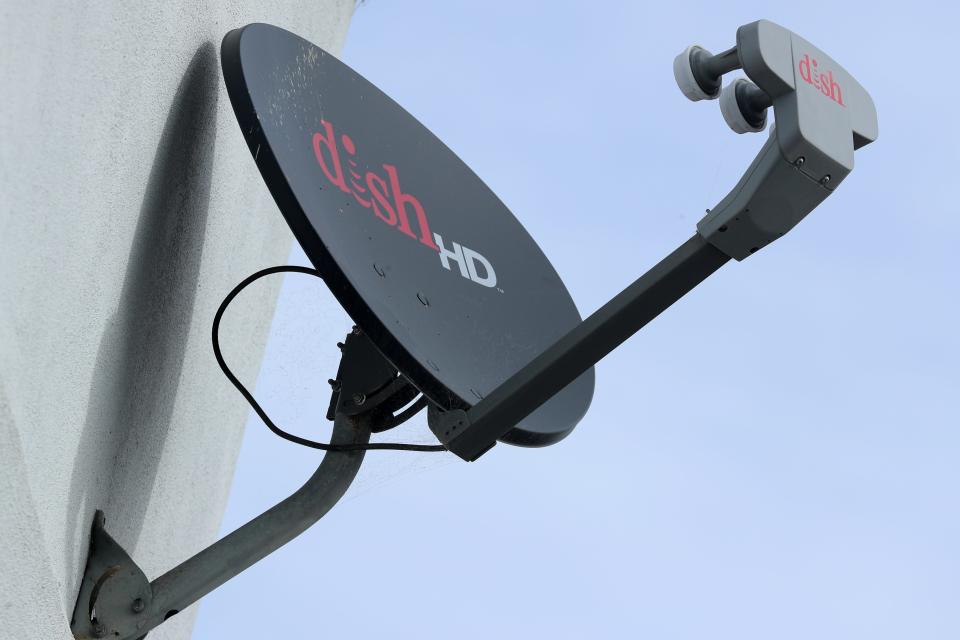Dish's $10 billion 5G build-out budget likely won't be enough to build a standalone cellular network
This story was delivered to Business Insider Intelligence Connectivity & Tech subscribers earlier this morning.
Dish Chairman Charlie Ergen used the company's Q4 earnings call to address analysts' concerns that $10 billion would not be enough to build a standalone cellular network. As a condition of T-Mobile acquiring Sprint, the US Federal Communications Commission (FCC) required Dish to build a standalone network that covers 20% of the US population by 2022.

Reuters
While skeptics have pointed to the far higher network build-out costs of other US carriers, Ergen said he believed they failed to account for technical debt — the costs associated with maintaining old equipment and ensuring backward compatibility.
Operations costs, Ergen said, would also be reduced because Dish intends to employ new automation technologies and cloud-based networking. Furthermore, Dish would utilize OpenRAN, a telecommunication standard that makes it easier for network operators to supply components from multiple vendors.
While the factors Ergen cited will undoubtedly lead to cost savings, there is still reason to doubt Dish's $10 billion budget will be enough. Here's why the current plan might not be viable:
Although legacy players face costs associated with technical debt, that in itself wouldn't account for the magnitude of difference in network build-out costs. Dish's $10 billion budget for a multiyear network build-out seems meager when considering that in 2019 alone, Verizon spent nearly twice that amount on CapEx — the bulk of which went to fiber deployments and the build-out of its 5G network. Virtualization will reduce costs for equipment, but that equipment typically accounts for only 20% of network build-out costs, according to MoffettNathanson research cited by LightReading.
Rakuten likewise thought building a network from scratch would have operational advantages, but it underestimated the difficulty of procuring network resources. Rakuten expected to launch its cloud-native 4G network in October 2019, but has since pushed back the launch date to April 2020. While virtualized cloud-native systems are certainly more efficient, Rakuten still had to navigate the complicated legacy procedure of securing thousands of base stations. Dish will also likely face unexpected costs such as those associated with acquiring spectrum and tower real estate. And because it will be bidding against legacy players for access to these assets, Dish may find itself paying far more than it would like in order to build a viable network.
Should Dish fumble its standalone network build-out, the company could find itself in a precarious position. As a stipulation of the T-Mobile acquisition of Sprint, Dish will have seven years of access to the new T-Mobile network to operate as an MVNO.
If Dish does not spend adequately on building a network in that period, its cash flow would be restricted by the continued dependence on leased network capacity for its day-to-day operations. At the same time, Verizon, AT&T, and T-Mobile might be reluctant to lease to Dish, as the company promised to aggressively grow its customer base by offering lower prices.
For Dish, ensuring operational stability may mean taking a more aggressive approach to network build-out, as operations will suffer should the company rely long-term on the MVNO model. If the company fails to build its network capabilities in a timely manner, it may resort to alternatives like selling assets or exploring partnerships or acquisition offers.
Want to read more stories like this one? Here's how to get access:
Sign up for Connectivity & Tech Pro, Business Insider Intelligence's expert product suite keeping you up-to-date on the people, technologies, trends, and companies shaping the future of connectivity, delivered to your inbox 6x a week. >> Get Started
Check to see if you already have access to Business Insider Intelligence through your company, or inquire about access if you don't. >> Check If You Have Enterprise Access
Explore related topics in more depth. >> Visit Our Report Store
Current subscribers can log in to read the briefing here.
Read the original article on Business Insider

